The Surgery Room
The Surgery Room delves into the intricate, ever-
evolving and ambiguous relationship between bodies and
technology, emphasizing how technological advancements
often promise liberation and progress but can result
in manipulation and control, imposing new forms
of surveillance. By examining the body not merely
as an organic entity but as an apparatus deeply infused with technological elements, the work highlights the social implications of this fusion, reflecting issues of identity, privacy, emotional manipulation and the digital traces we leave behind.
Inspired by the concept of the anatomical theater,
the project adopts dissection as a metaphor and through
an interplay of performance, data visualization and
storytelling emphasizes the profound impact technology
has on human experience and the ways in which it can
both connect and alienate us.
Master’s Thesis
2025 - ongoing
2025 - ongoing
AV Installation
Interactive Station
Body Tracking
Image Recognition
Biometric Data Tracking
Data Visualization
3D Modeling
Rendering
Interactive Station
Body Tracking
Image Recognition
Biometric Data Tracking
Data Visualization
3D Modeling
Rendering
ACT I: Identity Affirmation and Mass Surveillance
In this opening act, the project focuses on how image recognition and machine learning systems shape identity in the digital era. Here bodies become objects of data collection: scanned, classified and monitored. This process reveals both the potential and the pitfalls of modern surveillance: while such systems promise efficiency and personalization they also embed biases that can mislabel or stereotype individuals based on incomplete or prejudiced training data.
A “hacked” machine learning model humorously assigns labels such as never disappointing, desirable, vulnerable and paranoid. These categories are intentionally grounded in existing stereotypes, highlighting how easily systems can be manipulated or biased, emphasizing that algorithmic decision-making is never neutral but carries cultural, social and personal assumptions.
In this opening act, the project focuses on how image recognition and machine learning systems shape identity in the digital era. Here bodies become objects of data collection: scanned, classified and monitored. This process reveals both the potential and the pitfalls of modern surveillance: while such systems promise efficiency and personalization they also embed biases that can mislabel or stereotype individuals based on incomplete or prejudiced training data.
A “hacked” machine learning model humorously assigns labels such as never disappointing, desirable, vulnerable and paranoid. These categories are intentionally grounded in existing stereotypes, highlighting how easily systems can be manipulated or biased, emphasizing that algorithmic decision-making is never neutral but carries cultural, social and personal assumptions.
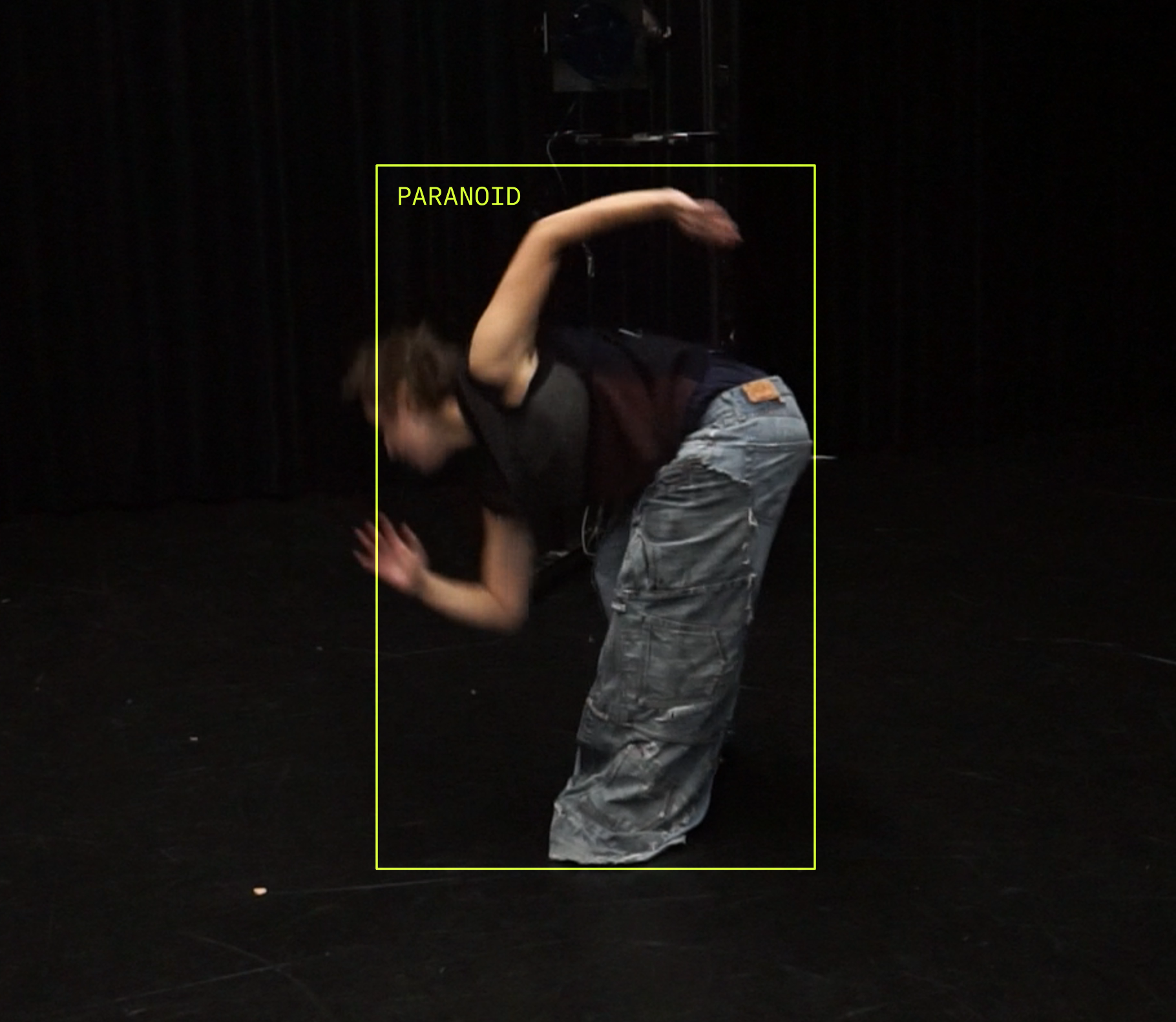

ACT II: Emotional Transparency and Privacy Invasion
This act examines how data-driven tools extend beyond the identification of physical attributes to probe into emotional and neural realms. By measuring heart rate and brain waves, these technologies break down the barriers between internal experiences and external expression, making visible what traditionally remains hidden. In this environment, individuals become both transparent and manipulable where emotions are fully calculated.
The performance highlights the risks of biometric surveillance: access to brainwave data poses significant threats to personal privacy, as external stimuli have the potential to control or alter mental states without consent. By interweaving pulsating music, strobe lighting and real-time biometric feedback, the act underscores the delicate balance between fostering deeper self-awareness and exposing individuals to invasive technological scrutiny.
This act examines how data-driven tools extend beyond the identification of physical attributes to probe into emotional and neural realms. By measuring heart rate and brain waves, these technologies break down the barriers between internal experiences and external expression, making visible what traditionally remains hidden. In this environment, individuals become both transparent and manipulable where emotions are fully calculated.
The performance highlights the risks of biometric surveillance: access to brainwave data poses significant threats to personal privacy, as external stimuli have the potential to control or alter mental states without consent. By interweaving pulsating music, strobe lighting and real-time biometric feedback, the act underscores the delicate balance between fostering deeper self-awareness and exposing individuals to invasive technological scrutiny.


ACT III: Behavioral Monitoring and Freedom of Expression
In the final act, the performance explores how human actions and desires are increasingly dictated by external digital stimuli—such as notifications, alerts and algorithmic suggestions that structure daily behaviors. The dancers begin in a state of atrophy and stillness, symbolizing bodies paralyzed by overexposure to technological commands. This initial immobility reflects how constant digital input can suppress autonomy, shaping not only what people do but also what they want. As the performance unfolds, sound cues resembling notification alerts act as electrical impulses, gradually reactivating the dancers’ bodies.
Yet, as the rhythm intensifies, the dancers begin to move in unison, shifting from controlled responses to self-directed motion. This collective choreography becomes a form of resistance, a reclaiming of agency and expression through rupture beyond the constraints imposed by digital systems.
Act III reflects on the tension between technological control and the human need for autonomy, suggesting that even within systems of constant monitoring and manipulation, bodies can find ways to reconnect, move and resist.
In the final act, the performance explores how human actions and desires are increasingly dictated by external digital stimuli—such as notifications, alerts and algorithmic suggestions that structure daily behaviors. The dancers begin in a state of atrophy and stillness, symbolizing bodies paralyzed by overexposure to technological commands. This initial immobility reflects how constant digital input can suppress autonomy, shaping not only what people do but also what they want. As the performance unfolds, sound cues resembling notification alerts act as electrical impulses, gradually reactivating the dancers’ bodies.
Yet, as the rhythm intensifies, the dancers begin to move in unison, shifting from controlled responses to self-directed motion. This collective choreography becomes a form of resistance, a reclaiming of agency and expression through rupture beyond the constraints imposed by digital systems.
Act III reflects on the tension between technological control and the human need for autonomy, suggesting that even within systems of constant monitoring and manipulation, bodies can find ways to reconnect, move and resist.
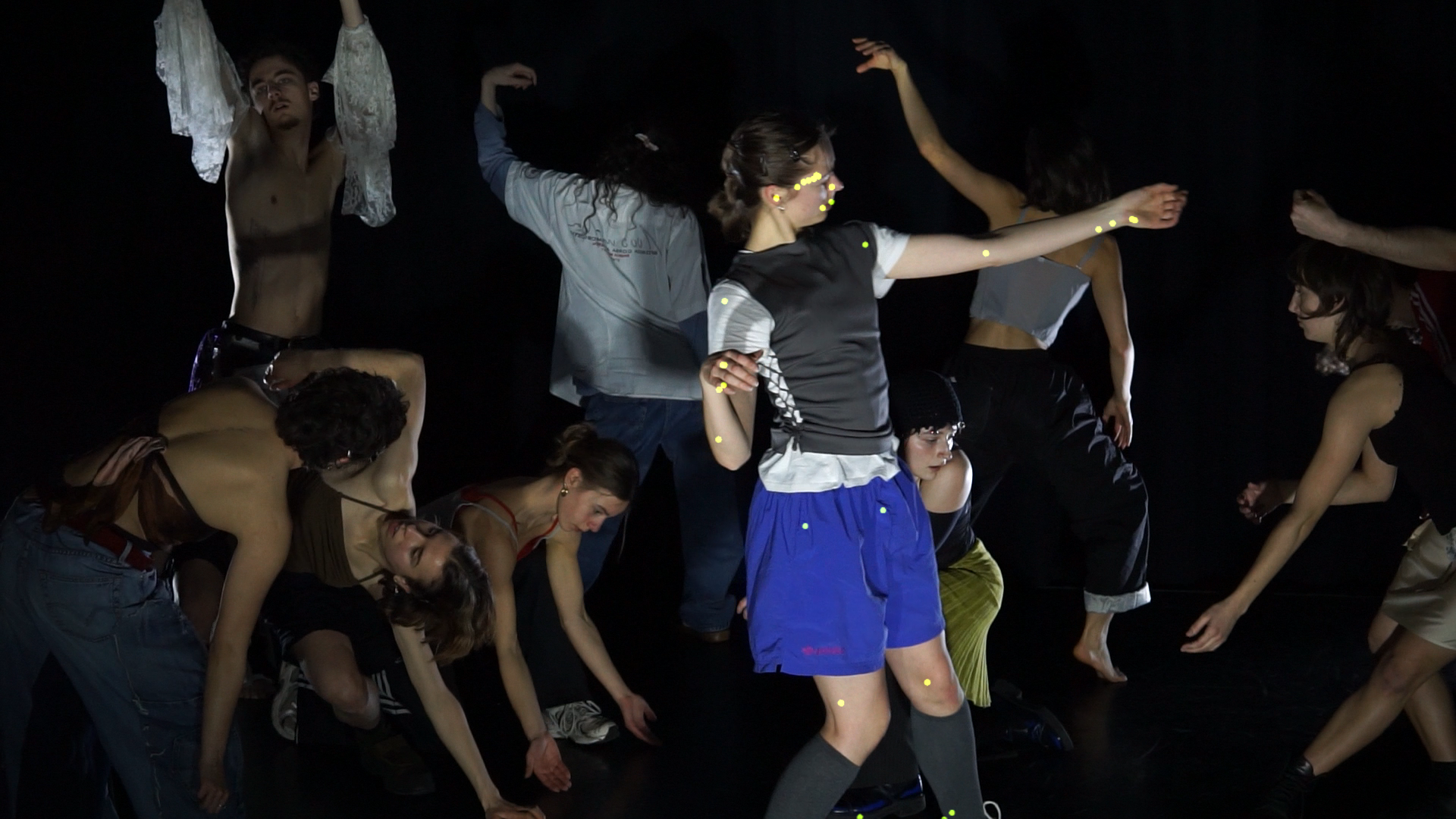

AV Installation
The three acts that compose The Surgery Room take shape within a video installation designed to reflect the metaphor of fragmentation as a form of dissection. This spatial configuration becomes an active extension of the conceptual framework of the work, embodying the idea of the body as a techno-organic system broken into parts for analysis and reinterpretation.
The three acts that compose The Surgery Room take shape within a video installation designed to reflect the metaphor of fragmentation as a form of dissection. This spatial configuration becomes an active extension of the conceptual framework of the work, embodying the idea of the body as a techno-organic system broken into parts for analysis and reinterpretation.








The audio system is built on a quadraphonic setup, composed of four speakers positioned to define the perimeter of the space, combined with a subwoofer. This configuration allows for a three-dimensional soundscape, where audio elements can move across the room, reinforcing the bodily dimension of the experience.
Each act of the installation is accompanied by a specific sound architecture, designed to reflect the conceptual and emotional character of the narrative. The distribution of sound in space is used to create dynamic effects: voices, sounds, and musical elements are spatialized to travel between the speakers, immersing the audience and modifying their perception of proximity and direction.
Each act of the installation is accompanied by a specific sound architecture, designed to reflect the conceptual and emotional character of the narrative. The distribution of sound in space is used to create dynamic effects: voices, sounds, and musical elements are spatialized to travel between the speakers, immersing the audience and modifying their perception of proximity and direction.
The space is equipped with three projectors and one camera, positioned to serve different narrative and interactive functions. Upon entering the space, a first projector (P1) is connected to a tracking camera (S1) and projects content onto the back side of the main wall, creating an interactive station where visitors are scanned and introduced to the core themes of the work.
Inside the main space, two projectors (P2 and P3) are dedicated to mapping the video content across the large central panel and its fragmented extensions.
Inside the main space, two projectors (P2 and P3) are dedicated to mapping the video content across the large central panel and its fragmented extensions.

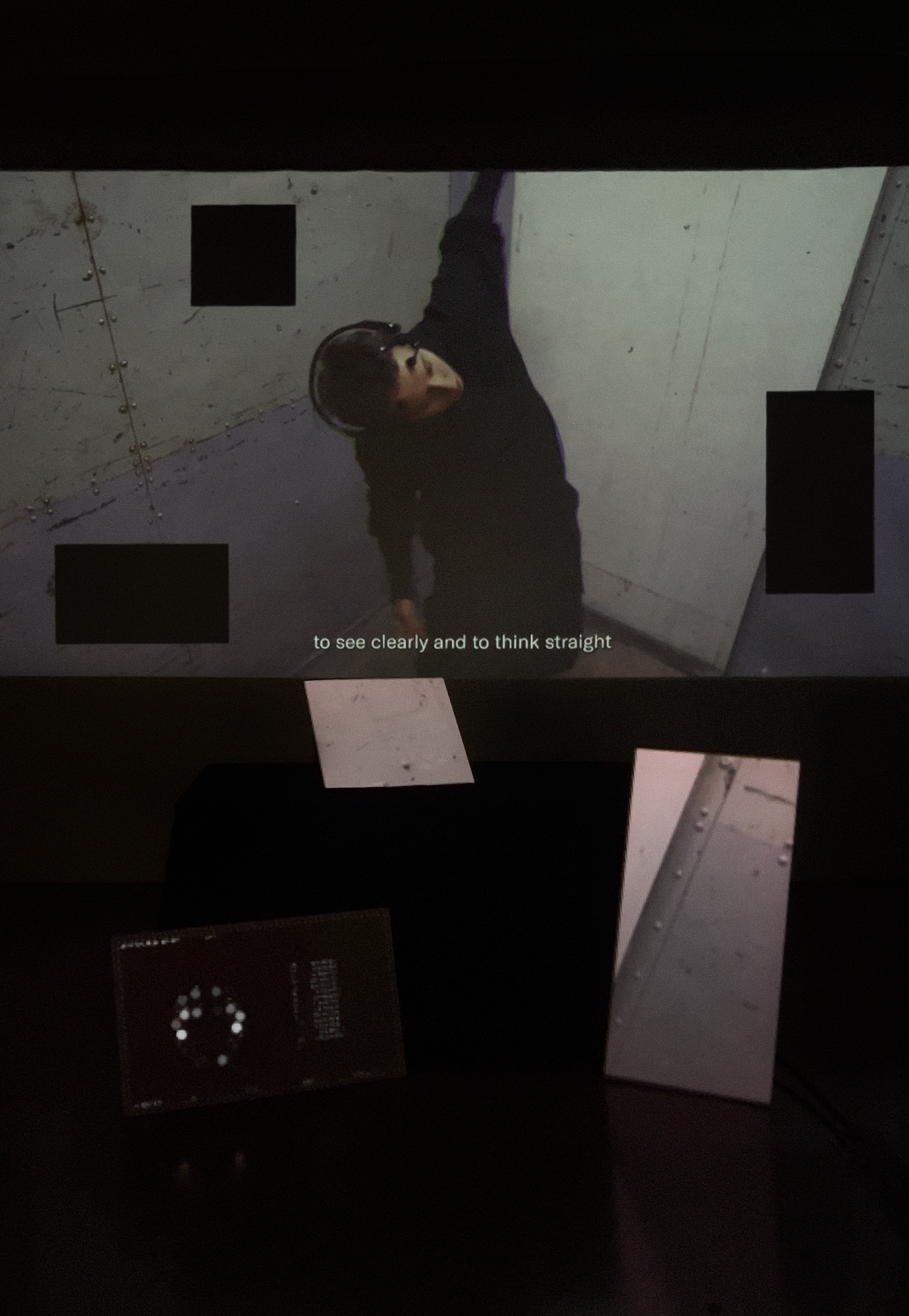

Prototype - Unirsm, March 2025
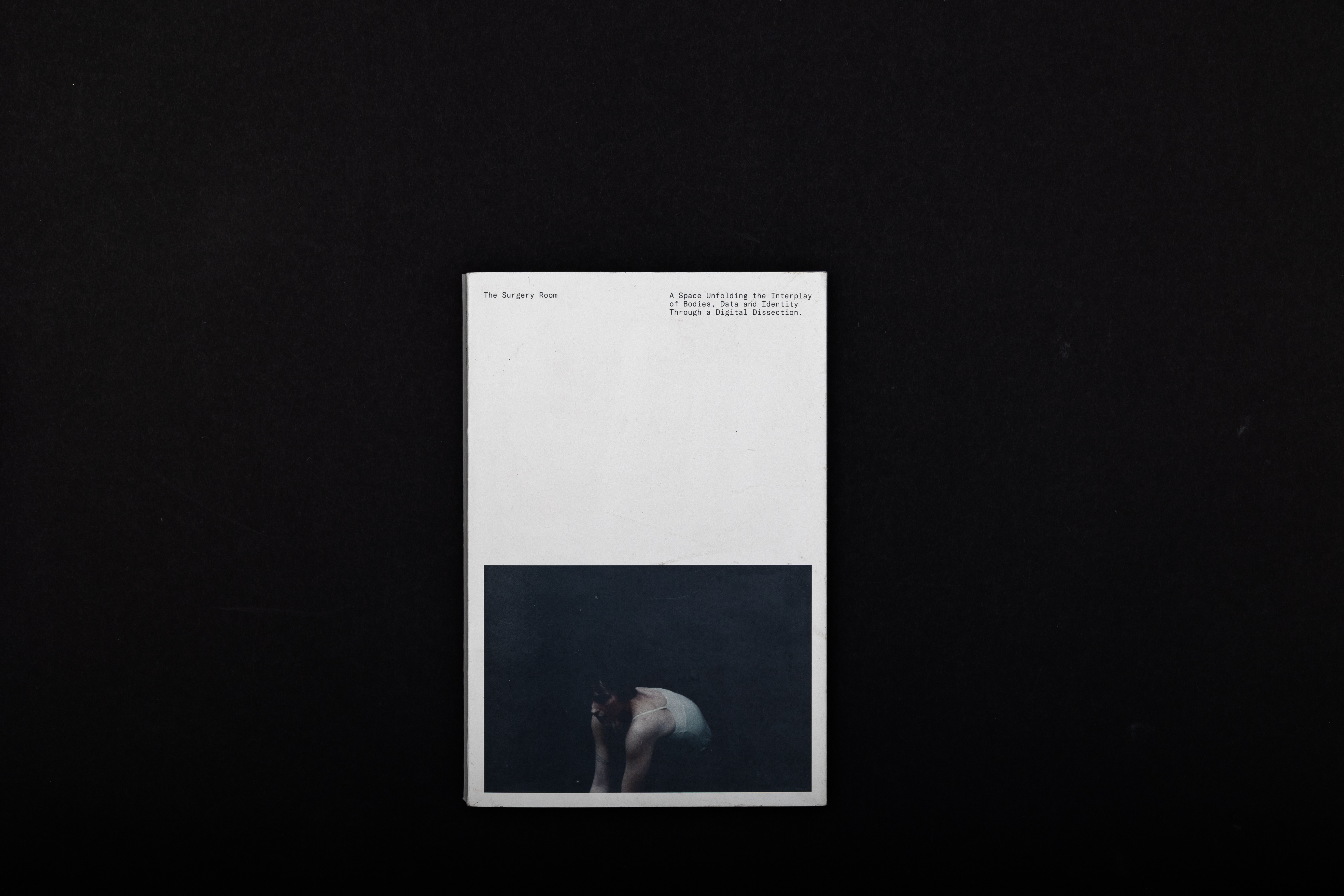

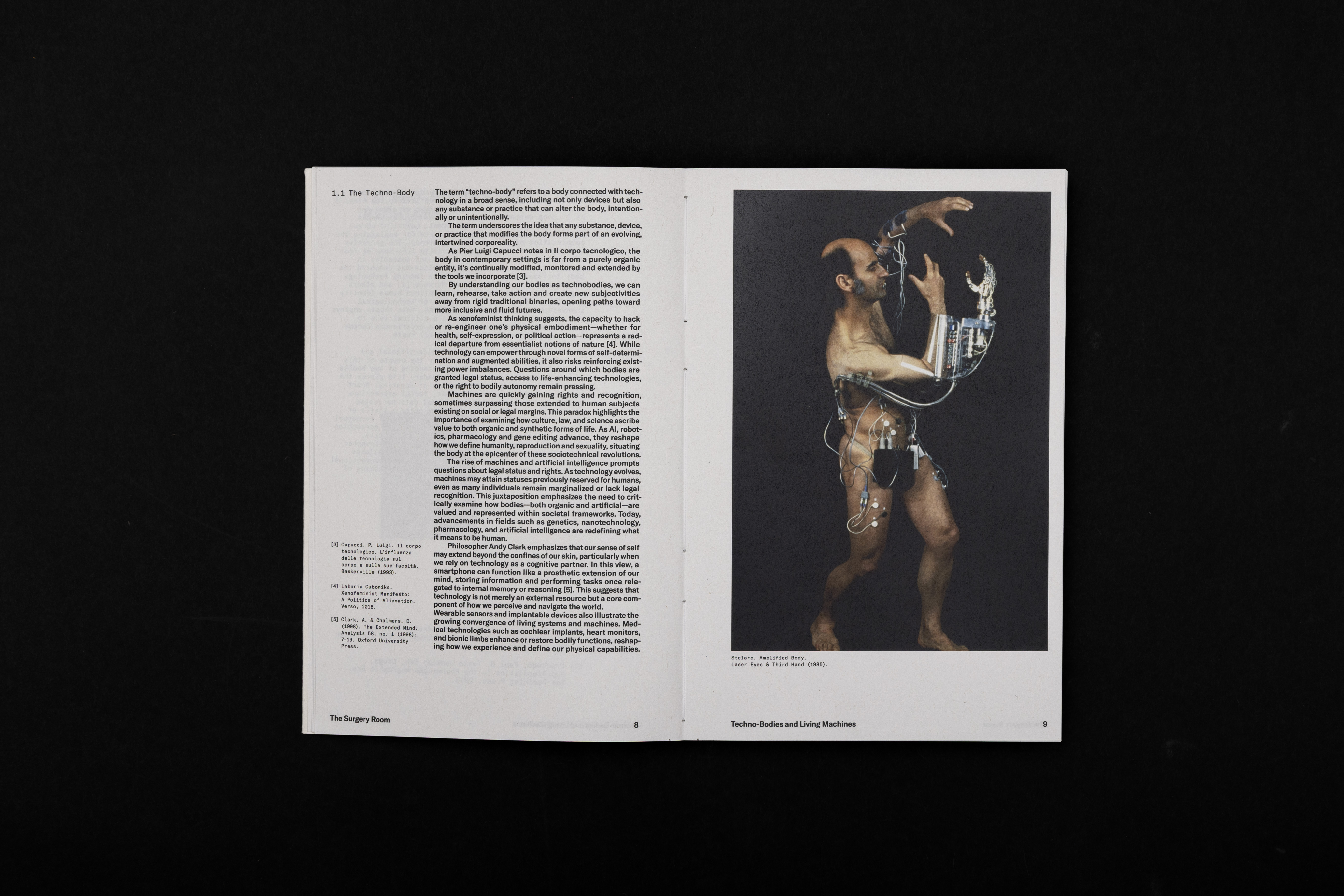






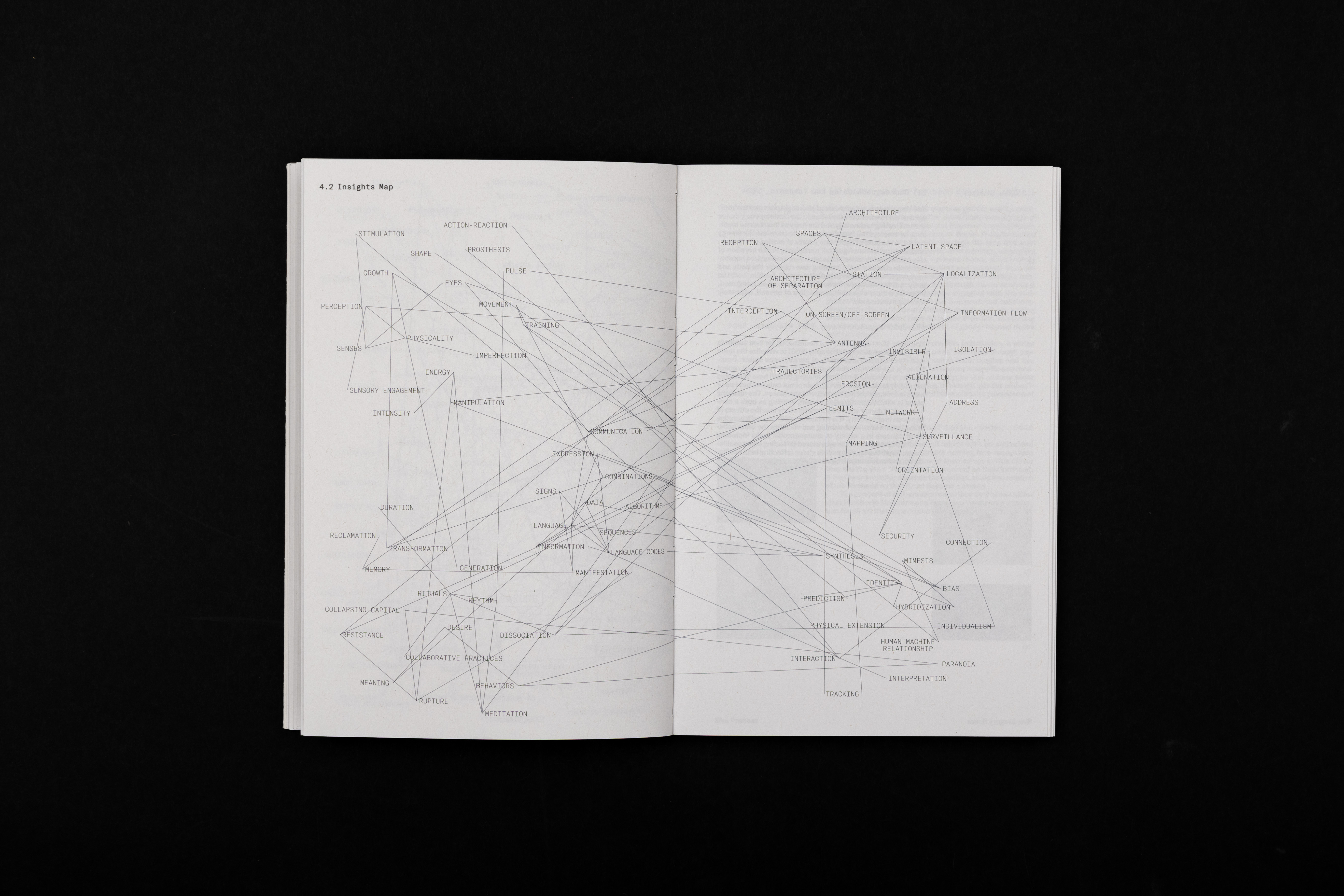

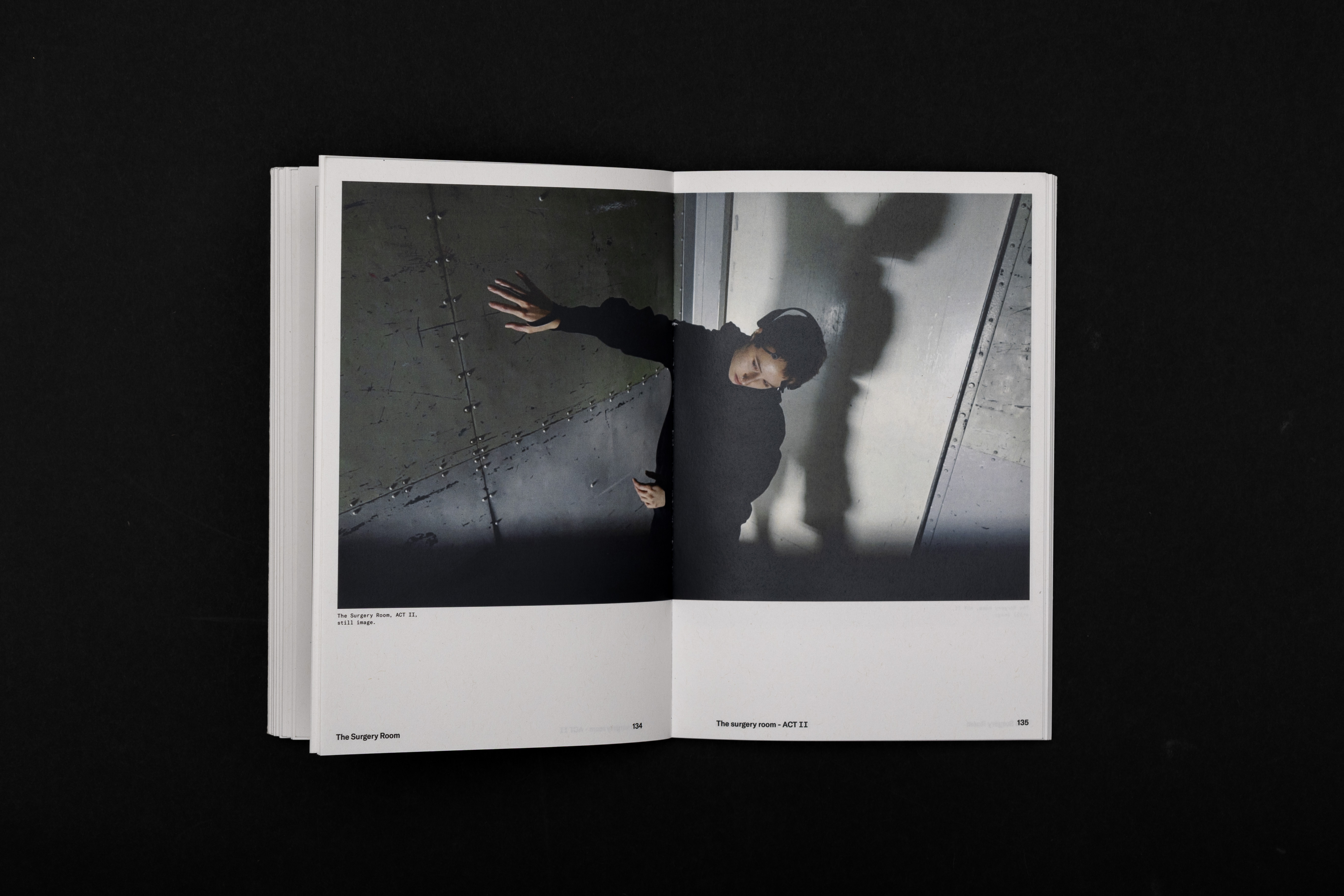



Valentina Ugolini
Concept
Direction
Design
Development
Caterina Santullo
Creative Collaboration
Script
Voice
Costume
Riccardo Agabiti
Matteo Morri
Music Composition
and Production
Agnese Biavati
Côme Monge
Hugo Romero Martínez
Judit Baldoví
Marit Wins
Matilde Stefanini
Mia Boggs
Paula Toronell
Rose Brouwer
Tessa Boelens
Zoé Bernard
Dance
Choreography
Concept
Direction
Design
Development
Caterina Santullo
Creative Collaboration
Script
Voice
Costume
Riccardo Agabiti
Matteo Morri
Music Composition
and Production
Agnese Biavati
Côme Monge
Hugo Romero Martínez
Judit Baldoví
Marit Wins
Matilde Stefanini
Mia Boggs
Paula Toronell
Rose Brouwer
Tessa Boelens
Zoé Bernard
Dance
Choreography
Alessandro Lucarini
Marco dell’Abate
On-set Assistance
Alberto Quirico
Jeroen Alexander Meijer
Maarten Keus
RNDR Studio
The Gray Space in the Middle
Technical Equipment
and Hardware
Ettore Bellini
Book Design
Giorgio Dall'Osso
Roberto Paci Dalò
Supervision
Marco dell’Abate
On-set Assistance
Alberto Quirico
Jeroen Alexander Meijer
Maarten Keus
RNDR Studio
The Gray Space in the Middle
Technical Equipment
and Hardware
Ettore Bellini
Book Design
Giorgio Dall'Osso
Roberto Paci Dalò
Supervision